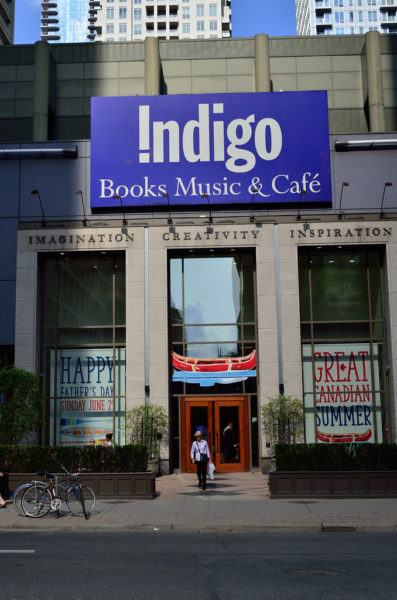Growing cotton … unlike sugar or rice, never required slavery. By 1870, freedmen and whites produced as much cotton as the South produced in the slave time of 1860. Cotton was not a slave crop in India or in southwest China, where it was grown in bulk anciently. And many whites in the South grew it, too, before the war and after. That slaves produced cotton does not imply that they were essential or causal in the production.
Economists have been thinking about such issues for half a century. You wouldn’t know it from the King Cottoners. They assert, for example, that a slave was “cheap labor”. Mistaken again. After all, slaves ate, and they didn’t produce until they grew up. Stanley Engerman and the late Nobel Prize winner Robert Fogel confirmed in 1974 what economic common sense would suggest: that productivity was incorporated into the market price of a slave. It’s how any capital market works. If you bought a slave, you faced the cost of alternative uses of the capital. No supernormal profits accrued from the purchase. Slave labor was not a free lunch. The wealth was not piled up.
The King Cotton school has been devastated recently in detail by two economic historians, Alan Olmstead of the University of California at Davis and Paul Rhode of the University of Michigan. They point out, for example, that the influential and leftish economist Thomas Piketty grossly exaggerated the share of slaves in U.S. wealth, yet Edward Baptist uses Piketty’s estimates to put slavery at the center of the country’s economic history. Olmstead and Rhode note, too, from their research on the cotton economy that the price of slaves increased from 1820 to 1860 not because of institutional change (more whippings) or the demand for cotton, but because of an astonishing rise in the productivity of the cotton plant, achieved by selective breeding. Ingenuity, not capital accumulation or exploitation, made cotton a little king.
Slavery was of course appalling, a plain theft of labor. The war to end it was righteous altogether — though had the South been coldly rational, the ending could have been achieved as in the British Empire in 1833 or Brazil in 1888 without 600,000 deaths. But prosperity did not depend on slavery. The United States and the United Kingdom and the rest would have become just as rich without the 250 years of unrequited toil. They have remained rich, observe, even after the peculiar institution was abolished, because their riches did not depend on its sinfulness.
Dierdre McCloskey, “Slavery Did Not Make America Rich: Ingenuity, not capital accumulation or exploitation, made cotton a little king”, Reason, 2017-07-19.
September 25, 2023
QotD: The economics of American slavery
September 24, 2023
Operation Market Garden Begins – WW2 – Week 265 – September 23, 1944
World War Two
Published 23 Sep 2023Monty’s Operation(s) Market Garden, to drop men deep in the German rear in the Netherlands and secure a series of bridges, begins this week, but has serious trouble. In Italy the Allies take Rimini and San Marino, but over in the south seas in Peleliu the Americans have serious problems with Japanese resistance. Finland and the USSR sign an armistice, and in Estonia the Soviets take Tallinn, and there are Soviet plans being made to enter Yugoslavia.
(more…)
A sliver of hope for Indigo?
In the latest SHuSH newsletter, Ken Whyte relays some new-ish rumours in the book business that may provide a bit of help for the struggling Indigo chain:

“Indigo Books and Music” by Open Grid Scheduler / Grid Engine is licensed under CC0 1.0
So what do we make of Heather Reisman’s return as CEO of the Indigo bookselling chain after her unceremonious removal from that role just two months ago?
The short answer is I have no idea, but SHuSH has never shied away from delivering irresponsible speculation on happenings at Indigo. I heard this week from a reasonably reliable source that Indigo is in discussions with Elliott Management Corp., owners of Barnes & Noble and the world’s only buyer of distressed bookselling chains.
This conflicts with some chatter I reported last spring suggesting that Elliott Management was uninterested in Indigo. If what I’m now hearing is true, it’s great news.
I have to emphasize, I have no idea. But if a deal were imminent, it would make sense to bring Heather back to see it through. Indigo wouldn’t want the bother of recruiting a new leader simply to effect the handover, and who would want the job on those terms?
And another thing …
In last week’s piece about Indigo, I noted that the company’s staff, “with exceptions, were young, inexpert, and disinterested”. Amal, clearly one of the exceptions, left an interesting comment:
No. We became disinterested simply because a) we were all book lovers and had zero interest in selling crap and b) just like the author of this piece, head office and management were beyond dismissive of our knowledge, our book expertise, our genuine love of the written word. I worked at Chapters/Indigo starting in 2006 all the way until 2019, a couple of days a week, simply for my love of books. I am incredibly proud of my time there — especially when I was able to introduce new authors or genres to readers. My staff picks would sell out because I would hand sell them to people with my joy. It certainly wasn’t for the stellar pay or the people who treat retail employees like we are “inexpert”. Fun fact: you were asked in the job interview what your favourite books/genres were.
Architect Breaks Down Why All American Diners Look Like That | Architectural Digest
Architectural Digest
Published 1 Jun 2023Today Michael Wyetzner of Michielli + Wyetzner Architects returns to Architectural Digest to explore the design evolution of American diners. A cornerstone of American dining culture, their distinctive style has been emulated around the world making them a popular salute to the USA. Michael provides an expert look into the history behind their design evolution from the 1920s through to the 1960s and explains why all diners came to look like that.
(more…)
QotD: The composition of the polis
A polis is made up of households, called oikoi (singular: oikos), to the point that creating a new polis was called synoikismos (or synocism). The Greek there is συνοικισμóς, συν- (meaning “together”) and οἶκος giving the word a meaning something like “living together in one house” or “putting the houses together as one”. This was the word the Greeks used to describe the process by which a disparate set of tribes, villages and households came together to create a polis; Indeed Aristotle (Arist. Pol. 1253b) is explicit that the oikos is the smallest unit, the “atom” to use M.H. Hansen’s word, of the polis, not the individual.
So what is an oikos? Well that word is about as plastic as polis. Oikos can mean a house (as in a physical building), or it can mean a household (as in the family that dwells in that building) or it can mean all of the property of that household, and indeed Greek writers will use this word to mean all of these things, often in the same context (that is they shift freely between these linked meanings, not seeing them as fully distinct). Now as a “family” we should note that an oikos was rather more extensive than our sense of family (though rather less extensive than the Roman concept of a familia and a lot less extensive than a Roman gens; we’ll come to these in a later series): an oikos consisted of all of the people who lived together in a house, which generally meant the adult citizen male, his wife and dependents and also their enslaved workers. It that family had enslaved workers who did not live with them, they also generally counted as part of the oikos because they were understood as the property of it.
The creation of a polis meant merging all of these things together in a very literal way. In a physical sense the creation of a town core meant literally putting houses together, as a good part of the population might move to live in that town core (with their farms just outside the town in walking distance, remember: most of these poleis are very small). Indeed M.H. Hansen notes in the introductory article on synoikismos in the Inventory that the only “purely political synoecism” – that is, a synoikismos that did not involve actually moving people to form or merge with a new town center but merely politically united existing geographically distinct communities – occurs in myth in Theseus’ supposed creation of the Athenian poleis. That this sort of synoikismos never happens in the historical period (there’s an attempt in Ionia in 547/6 but it never gets off the ground) ought to suggest that it probably didn’t happen with Theseus either.
It is also in a sense the merging of families, as one of the key privileges of citizenship in a polis was the right to marry women of citizen status (that is, the daughters of citizens) and thus have citizen children. And it meant the new citizenry putting their fortunes – in a literal, physical sense of the wealth that enabled them to survive (think farms and farming) – together in common when it came to things like war.
This may all seem fairly straightforward, but I invite you to consider the different implications it has compared to the way we mostly conceive of the population of a country, which we tend to imagine as a collection of individuals; as we’ll see the Greeks did this a bit too, but it wasn’t the first thought they reached for. In the polis, it is the households that have standing, represented by their adult, free citizen male heads, not individuals. The polis protects the households from the world, not the members of the household from each other, with the most obvious and immediate legal implication being the fact that crimes against junior members of the household are often understood as property crimes against the head of the household and actions within the household are simply not the business of the state. Now we shouldn’t over-stretch this: the Greeks were capable of understanding non-free and non-male people as individuals at times, but the political structure of the polis is predicated on units of households.
Bret Devereaux, “Collections: How to Polis, 101: Component Parts”, A Collection of Unmitigated Pedantry, 2023-03-10.
September 23, 2023
“Canada is, as a whole, a naive, spoiled country that stands a pretty good chance of getting punched in the face by reality”
In The Line, Matt Gurney praises both the delivery and the content of a recent report by the Business Council of Canada urging Canadian governments to pay a lot more attention to economic security issues that seem to be almost universally neglected in favour of mediagenic gestures and battlespace prep for the next election.

Business Council of Canada report – https://thebusinesscouncil.ca/report/economic-security-is-national-security/
But as I was reading the report, there was this nagging thought in the back of my mind. Why is the Business Council of Canada trying to impress upon the government (and the country at large) the importance of economic security? Why do we need a report from top business leaders to remind our political leadership that poor countries aren’t generally safe and peaceful ones, and that there are countries out there that would wish us harm and that we need to be on guard against? Like, shouldn’t we know that already? Because none of this stuff is revolutionary. It’s all extremely basic stuff that any mature country should just sort of intuitively grasp. Right?
And that’s when the shoulder-slumping realization lands on you like a ton of bricks. We should, but in this country, we don’t. We just don’t. Because, well ….
Uh oh.
It seems to me that a country shouldn’t need a report to impress upon key civilian leadership that economic prosperity is the cornerstone of all security, or that, on the flip side, security is a prerequisite for prosperity. Toronto is a fair bit rougher than it used to be these days — join us at our event next month! — but when I leave the house to run an errand, I’m reasonably confident I’m not going to be abducted by a band of roving pirates prowling the leafy streets of Leaside. When I head up north for the weekend, it doesn’t occur to me that there’ll be a checkpoint along the route, looking to shake me down or carry off my children into slavery. In the mornings, when I lurch out of bed with a groan that gets louder with each passing year, I expect that the light switch will indeed result in light and that the faucet in the bathroom will provide clean water. I don’t have to worry about whether the water treatment plant has been bombed or the power lines shelled.
Many of my Canadian readers may find the above absurd or, at least, a bit of hyperbole. But that’s the point. As I have written many times before, almost everything we do in this country, and almost our entire self-identity as Canadians, accepts internal security and safety from military attack as an ironclad given, just by default. That makes sense: that has been the norm for us, for a long time. It seems absurd precisely because how distant it seems from our normal.
But it isn’t the norm in any historical sense much beyond a human lifetime or two or three, even in Canada. And more to the point, as the voice-over guys in the commercials say, past performance may not be indicative of future results.
We are not owed prosperity in perpetuity. We are not guaranteed security by virtue of our niceness. These are precious things that require more than just good luck — and good luck, thank God, is something Canada still does seem to have. In addition to luck, though, we need realistic understandings of our strengths, weaknesses and the threats we face. We need political leadership that is mature and aware enough to understand the difference between political interest and national interest, and that is seized enough with these issues to devote the necessary resources to building up and preserving our security, from all reasonably foreseeable threats. That includes not just investments of money and people, but also simply intellectual bandwidth and emotional toil. We have to think, hard, about things that aren’t nice to think about, and have robust, effective institutions and a critical mass of people with the necessary combination of mindset, academic and professional training and lived experience to be effective at foreseeing, heading off and, when necessary, managing crises that threaten our safety and prosperity. We need a supportive bureaucracy that is efficient and task-focused and doesn’t get in the way of all this vital work.
Does any of this sound like Canada to you?!
Does it sound like the leader of any of our governments, or any of the people who’ll replace those leaders? Does it sound like any of our institutions except the ones specifically tasked with security and defence? You know, the ones we habitually starve so we can spend a few extra bucks and a bit more political capital on something a bit more pleasing to the average voter? Does it sound like the sort of thing smart, well-read and educated Canadians spare a single solitary moment thinking about as they go about their day to day lives?
Of course not. No one does, and our politics reflect this. These just aren’t issues of concern in Canada outside of the military, the intelligence agencies and a few fellow journalists and academics I could probably recount here in their totality by their first names.
More on the history field’s “reproducibility crisis”
In the most recent edition of the Age of Invention newsletter, Anton Howes follows up on his earlier post about the history field’s efforts to track down and debunk fake history:
The concern I expressed in the piece is that the field of history doesn’t self-correct quickly enough. Historical myths and false facts can persist for decades, and even when busted they have a habit of surviving. The response from some historians was that they thought I was exaggerating the problem, at least when it came to scholarly history. I wrote that I had not heard of papers being retracted in history, but was informed of a few such cases, including even a peer-reviewed book being dropped by its publisher.
In 2001/2, University of North Carolina Press decided to stop publishing the 1999 book Designs against Charleston: The Trial Record of the Denmark Vesey Slave Conspiracy of 1822 when a paper was published showing hundreds of cases where its editor had either omitted or introduced words to the transcript of the trial. The critic also came to very different conclusions about the conspiracy. In this case, the editor did admit to “unrelenting carelessness“, but maintained that his interpretation of the evidence was still correct. Many other historians agreed, thinking the critique had gone too far and thrown “the baby out with the bath water“.
In another case, the 2000 book Arming America: The Origins of a National Gun Culture — not peer-reviewed, but which won an academic prize — had its prize revoked when found to contain major errors and potential fabrications. This is perhaps the most extreme case I’ve seen, in that the author ultimately resigned from his professorship at Emory University (that same author believes that if it had happened today, now that we’re more used to the dynamics of the internet, things would have gone differently).
It’s somewhat comforting to learn that retraction in history does occasionally happen. And although I complained that scholars today are rarely as delightfully acerbic as they had been in the 1960s and 70s in openly criticising one another, they can still be very forthright. Take James D. Perry in 2020 in the Journal of Strategy and Politics reviewing Nigel Hamilton’s acclaimed trilogy FDR at War. All three of Perry’s reviews are critical, but that of the second book especially forthright, including a test of the book’s reproducibility:
This work contains numerous examples of poor scholarship. Hamilton repeatedly misrepresents his sources. He fails to quote sources fully, leaving out words that entirely change the meaning of the quoted sentence. He quotes selectively, including sentences from his sources that support his case but ignoring other important sentences that contradict his case. He brackets his own conjectures between quotes from his sources, leaving the false impression that the source supports his conjectures. He invents conversations and emotional reactions for the historical figures in the book. Finally, he fails to provide any source at all for some of his major arguments
Blimey.
But I think there’s still a problem here of scale. It’s hard to tell if these cases are signs that history on the whole is successfully self-correcting quickly, or are stand-out exceptions. I was positively inundated with other messages — many from amateur historical investigators, but also a fair few academic historians — sharing their own examples of mistakes that had snuck past the careful scholars for decades, or of other zombies that refused to stay dead.
“Even before it began, the protest was denounced as a hatefest”
Tasha Kheiriddin on the parents’ 1 Million March 4 Children protest against teaching LGBT issues to school children and the counter-protest by teachers, unions, and a disturbing number of sitting politicians:
On Wednesday, thousands of parents and supporters took to the streets across Canada for the 1 Million March 4 Children protest, chanting “leave the kids alone.” They were protesting the teaching of “gender ideology” in schools, including lessons about gender identity, transgenderism and schools’ refusal to inform parents of their children’s use of preferred pronouns.
Even before it began, the protest was denounced as a hatefest. School boards sent letters to parents decrying the event. The Ontario Federation of Labour organized counter-protests with the slogan “Trans rights are workers’ rights.” NDP leader Jagmeet Singh stood on Parliament Hill, chanting, “Hey hey, ho ho, transphobia has got to go!” Prime Minister Justin Trudeau tweeted, “We strongly condemn this hate and its manifestations.”
Here’s something we can all agree on: there is no room for hate in schools. If a kid bullies another kid for any reason, including gender identity, they should be disciplined. But the counter-protestors go further: in their view, unless you actively instruct children about gender, sexuality and inclusiveness at an early age, it is you who is being hateful. There are no shades of grey: you are either a full-on supporter of drag story time or a transphobic bigot.
When it comes to gender identity, it is wrong for educators to dismiss all parental concerns as homophobia. Yes, there are some bigoted parents who teach their kids that being gay or trans is a sin. Some of them were in the crowd Wednesday.
But there are also many parents who are legitimately concerned that encouraging children to question their sexual identity at a very young age is confusing and inappropriate. We label movies PG-13 or higher when they contain sexuality and nudity. Why then introduce sexual identities such as aromantic (absence of romantic attraction) asexual (absence of sexual attraction), pansexual (attraction to any gender) or demisexual (attraction that requires an emotional bond) to grade school kids? And more importantly, why is this the purview of the school system at all?
On Twit-, er, I mean “X”, Jason James responded to a Justin Trudeau Xpost with this counterfactual:
Sash Clamp Extension | Paul Sellers
Paul Sellers
Published 19 May 2023We all need longer clamps from time to time, especially when it comes to long tables, beds, and the like. I love my lightweight aluminium clamps and they lend themselves to a simple option for creating longer clamps from shorter ones.
This video will take out the mystery and deliver a totally practical option for you at almost zero cost. Keeping life simple is always difficult but this option is doable in a matter of minutes.
——————–
(more…)
QotD: In which we discover why they’re called antimacassars
“Antimacassar” is such a lovely Victorianism. We still have antimacassars — they’re those pieces of protective fabric you see at the top of your train or plane seat — but do you know why antimacassars are so called? Because in the nineteenth century Rowland’s Macassar Oil became such a popular unguent for gentlemen’s coiffures that the land was full of oily-haired chaps who, upon entering your drawing room, would settle back in your favorite chair — and uh-oh, there goes the fabric. Hence, the vital deployment of the antimacassar. Rowland’s Macassar Oil was one of the first products to be marketed nationally (and, indeed, internationally), and so universally known that Lewis Carroll put it in Alice Through the Looking-Glass:
His accents mild took up the tale:
He said ‘I go my ways,
And when I find a mountain-rill,
I set it in a blaze;
And thence they make a stuff they call
Rowlands’ Macassar-Oil –
Yet twopence-halfpenny is all
They give me for my toil.’Better yet, in Don Juan Lord Byron managed to rhyme it:
In virtue, nothing earthly could surpass her
Save thine ‘incomparable oil’, Macassar!Mark Steyn, “Self-Knitting Antimacassars”, Steyn Online, 2019-08-02.
September 22, 2023
Political psychosis and the never-ending “narrative”
Chris Bray points out several instances of the legacy media continuing to push “the narrative” despite any inconvenient facts that cast doubt on the official story:
Every day is opposite day. Every day is a bucket of fake. The narrative is the narrative; once it’s established, nothing penetrates it. It rattles on down the road, impervious to inputs, convinced of its own truth without regard to events outside the shell. Psychologists have a term for this.
So Politico warns this week that faith in vaccines is falling, and anti-vaxxer narratives are “on the rise.” Sample paragraph, this one describing Health Secretary Xavier Becerra:
The summer of 2023, a claim made in June and credulously repeated in the bottom half of September: If you take Covid vaccines, you can’t get sick, but if you don’t take Covid vaccines, you die. Government leaders who don’t push the 7th and 8th doses of the mRNA injections “choose not to take care of their people”.
[…]
But the narrative rolls on, unperturbed. If you’re dying of Covid, it’s because you hesitated to get your 7,369th dose, anti-vaxxer! Maybe you should have stopped being such a Nazi! In the news media, it’s 2021 forever, and the virtuous science-lovers are rolling up their sleeves to rebuke the science-hating morons, who will not survive the … okay, well, who will not survive the next … okay, well, YOU’LL PROBABLY DIE AT SOME POINT because you didn’t get it. You’re facing a winter of severe illness and death by 2054, at the latest. No amount of evidence will force the storytellers to stop telling this story. It’s the story, so they tell it. The Politico thing ends by quoting Peter Hotez, by the way, as you knew it would.
Similarly, The Atlantic warns now that Donald Trump was a time bomb who kept nearly going off for four years, and only the courage of General Mark Milley kept him under control. Look at the premise at the top of the piece: Disobeying, resisting, and undermining the President of the United States, a military officer protected the Constitution.
How well does the story parse the constitutional issues at stake? This well:
The military decided to have an abortion travel policy, and to fund it. A senator is now interfering in military policy and the unilateral executive appropriations of the Department of Defense, a sign of the ongoing constitutional crisis that began with Trump. Typically, you see, in our constitutional order, the military does whatever it wants, and spends money on its own authority however it feels like spending it, but Tuberville is engaging in the “unprecedented” act of suggesting that Congress should decide how to appropriate federal funds and regulate the armed forces, which means that he hates the Constitution. Article I, Section 8 would like a word, in this obviously extremist description of the authority of Congress:
To raise and support Armies, but no Appropriation of Money to that Use shall be for a longer Term than two Years;
To provide and maintain a Navy;
To make Rules for the Government and Regulation of the land and naval Forces;
And so on. Why is Tommy Tuberville being such a Nazi?
Is the Slovak Uprising Doomed to Fail? – War Against Humanity 115
World War Two
Published 21 Sep 2023Even as they battle an uprising in Slovakia, the Nazis see the opportunity to continue their racial realignment of Europe. The latest victims of this genocidal legacy are Anne Frank and her family, who arrive at Auschwitz. In Britain, the V-1 menace is defeated. But as London breathes a sigh of relief, the Nazis and their allies reduce Warsaw to rubble in a rampage of burning, looting, rape, and murder.
(more…)
“The Online News Act … has been an utter disaster”
Michael Geist on the ongoing disaster the federal government created with the Online News Act:
Prime Minister Justin Trudeau was asked this week about concerns with the implementation of Bill C-18, to which he responded that other countries are quietly backing Canada in its battle against tech companies. I posted a reality check tweet noting that Meta is not returning to news in Canada, the law’s regulation stipulating a 4% fee on revenues is not found anywhere else, and that Bill C-18 has emerged as a model for what not to do. With the House of Commons back in session, it is worth providing a more fulsome reality check on where things stand with the Online News Act. While the government is still talking tough, the law has been an utter disaster, leading to millions in lost revenues with cancelled deals, reduced traffic for Canadian media sites, declining investment in media in Canada, and few options to salvage this mess.
For those that took the summer off, Bill C-18 received royal assent in late June. Over the past three months:
1. Meta has blocked all news links in Canada and cancelled existing deals with Canadian news outlets. The blocked links covers both Canadian and foreign news in light of the broad scope of the law. While the Australian experience lasted a few days, the blocking in Canada has now gone on for weeks and there is little reason to believe that the company will reverse its position to comply with the law by simply not linking to news.
2. The government responded to the blocked news links by stopping to advertise on Facebook and Instagram and encouraging others to do the same. The boycott has had little effect as the Liberal party is still advertising on the platforms with a new round of ads this week, the Prime Minister is still posting on the platforms, and reports indicate that Facebook has not experienced a reduction in user activity. In fact, reports suggest that the experience on Facebook without news has improved. Further, a Competition Act complaint has not sparked any action.
3. Google responded to Bill C-18 by advising it too would remove news links from its services before the law takes effect in December. That position enabled it to wait for the government to release draft regulations that provide further detail on the application of the law and the standards for obtaining an exemption from the mandatory bargaining process that can lead to final offer arbitration overseen by the CRTC.
Several more items of concern at the link.
MAS 49: A Universal Service Rifle
Forgotten Weapons
Published 20 May 2019As the MAS 44 saw combat service with French Marines in Indochina, some of its shortcomings began to reveal themselves. The rifle was reliable and durable, but it lacked some capabilities, most importantly rifle grenade launching and an optics mounting. After a test series of MAS 44A rifles, a new pattern was adopted as the MAS 49 and put into production in 1951.
A total of about 80,000 MAS 49 rifles were made, and they incorporated a scope mounting dovetail in the left side of the receiver and a grenade launching muzzle device and sight. In addition, the bayonet was left out, as it was no longer seen as necessary. Not all rifles were used with scopes or for launching grenades, but with the universal capability it was simple to adapt any rifle to whatever specialized role was required. Ultimately the MAS 49 would be replaced again in only a few year, by the MAS 49-56 iterative improvement — but that’s a subject for a future video.
(more…)
QotD: Progressive hollow men
Ever feel like you’re living in a bad movie? I’ve recently found there’s a worse sensation: Feeling like you’re living in a good movie. There’s a scene in Apocalypse Now where Marlon Brando’s Col. Kurtz recites the opening stanzas of T.S. Eliot’s “The Hollow Men:”
Shape without form, shade without colour,
Paralysed force, gesture without motion;The poem was written in 1925, but that’s why Eliot was a great artist — he anticipated the soyboi, the soulless urban bugman, by almost 100 years. The Left is nothing but “Hollow Men”-style contrasts. They’re religious fanatics without a religion. They Fucking Love Science™, but think gravity is a social construction. They insist that Blacks are literally being lynched in Current Year America, and yet hardly a day goes by without news that yet another professional race hustler is really White. Their political campaigns, it goes without saying, are Cults of Personality without the personality. Above all, they are moralizers without morality – the things they scold us about are so self-contradictory, or so absurd on their face, that one is forced to conclude that this by design.
Severian, “The Hollow Men”, Rotten Chestnuts, 2020-12-19.











